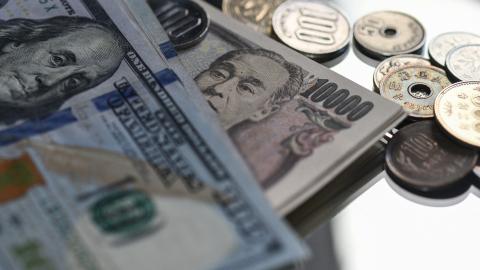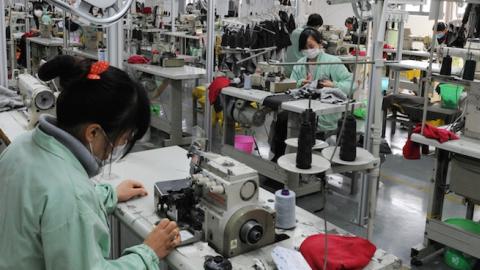The East Asian economic model is running out of steam. Demographics and slowing growth in world trade will force Asia’s developing countries to rely more on internal demand instead of the outward-oriented policies that made their neighbors rich. That will mean slower growth and prolonged regional inequality.
After World War II, Japan developed rapidly by prioritizing export manufacturing, making products for consumers in advanced economies faster, more cheaply and more reliably. Government policies encouraged a high savings rate and channeled that capital to exporters. In a phenomenon known as the “flying geese,” South Korea, Taiwan and Malaysia prospered in Japan’s slipstream by adopting similar policies and joining the supply chains pioneered by Japanese companies.
Now the efficacy of the export-dependent model of rapid growth and development seems to be near its end. What worked so well in the past will no longer be as effective for poor and populous countries such as China, Indonesia, Vietnam and Burma. This calls into question the assumptions that underpin the so-called “Asian Century.”
Hopes that export-dependent Asian economies could make up for the slack of slowing industrialized nations were always too optimistic. Economies in the region have boasted the fastest growth rates in the world for two decades. East Asia is now behind more than one-third of all global manufacturing trade, compared to just 10% in 1970.
But growth was easier to attain in the latter part of the last century. In the 1980s, the combined population of exporting powerhouses Japan, South Korea, Taiwan, Singapore and Malaysia exceeded 150 million. The population of consumer markets in North America and Europe numbered more than 400 million. This equation is now reversed. There are one billion consumers in advanced economies compared to two billion people living in the developing countries throughout East Asia.
Global trade also seems to be stalled after runaway growth over the previous two decades. Merchandise exports as a percentage of global GDP peaked at 27% in 2008, up from 15% in the early 1990s. That figure has now fallen to 22%.
Exports have declined in every East Asian economy except for Vietnam over the past year. While Vietnam has enjoyed a 5% increase, South Korea, China, Japan, Singapore and Taiwan have suffered decreases between 5% and 17%.
The global trade pie is no longer growing and may well be shrinking. This should not be a surprise as consumption growth in the U.S. and Eurozone is increasing at an anemic 2% in real terms, half the historic average since 1950. Record low interest rates around the world have fueled overinvestment and excess capacity rather than raised consumption. Households in America and Europe are deleveraging rather than borrowing more to buy goods made in Asia.
All this means that so-called competitive currency devaluations in Asia will not work for the region even if doing so might offer exporters a short-term advantage. Since production in East Asia is now a vast integrated network, lowering the costs of one’s exports through devaluation will only lower the price all Asian exporters receive. A lower currency will also make imports from advanced economies more expensive, hurting domestic households.
Moreover, devaluation will only encourage mass capital flight out of Asia, with the exception of established safe havens such as Japan. This is China’s problem presently. The scale of capital outflows has forced its central bank to use hundreds of billions of dollars in foreign exchange reserves to stabilize the yuan.
Meanwhile, trading superpower China has retained a significant share of the low-cost and low-skill intra-Asian intermediary trade. At the same time, it has increased its share at the high-cost and high-value-added end.
This means China is now competing with exporters in low-income countries like Indonesia and the Philippines, as well as with firms in Malaysia, Singapore, Japan and South Korea. Intra-Asian trade will become more competitive over time as regional economies implement policies to secure a larger share of the intermediary market or process trade at their neighbors’ expense.
If Asia wants to grow more prosperous, it needs to change its economy from being producers to becoming end consumers. It needs to create its own markets, rather than simply producing goods cheaply for advanced economies.
Doing so will require radical policies that overturn the decades-old mindset that prioritizes the corporate sector over households. Instead governments will need to encourage consumption and remove subsidies to investment.
China is the poster child for how the old model is failing. Over the past decade, economic growth has been fueled by a more than 11-fold increase in credit to $34 trillion from $3 trillion. Resources have been poured into fixed investment and production including for export, with little regard for return on capital or actual demand. The emerging bad debt problem may well require almost all that China holds in foreign exchange and other reserves to rectify.
All the while, little attention or emphasis has been given to the building of institutions that are necessary for any country to escape the so-called middle income trap: rule-of-law, secure property and intellectual property rights, and the creative destruction of failing state-owned firms, to name three. Odds are lengthening as to whether China will ever reach the high income status enjoyed by neighbors such as Japan, South Korea and Taiwan.
Even if Asia’s developing countries recognize the need for a new model, they are unlikely to replicate the spectacular growth rates of their predecessors. That means over the next two decades, populous Asian countries such as China, Indonesia and Vietnam will face the challenge of aging populations before they gain developed status. If the Asian Century assumes that the region’s economies can rise as one, then it may be in trouble.


















